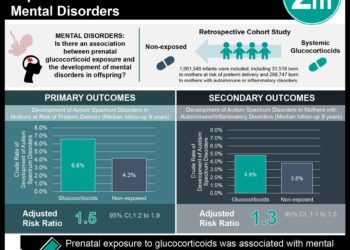Meta-analysis updates recommendations for C-sections
[tabs tab1=”2MM Rundown” tab2= “2MM Full Report”]
[tab]
Image: PD
1. Prophylactic antibiotics, blunt cephalad-caudad expansion of uterine incision, and oxytocin infusions to prevent post-partum hemorrhage are all recommended with a high level of certainty.
2. Supplemental oxygen and subcutaneous drains have been consistently shown to have no significant effect on maternal morbidity, and are therefore not recommended.
This systematic review updates recommendations regarding cesarean delivery (CD), claims that there now exists sufficient evidence to recommend with certainty 10 aspects of the procedure. Despite the increase of well-designed, well-conducted studies surrounding CD in recent years, available data is conflicting or insufficient in a number of critical areas. More studies are necessary to address these areas, including methods to reduce venous thromboembolism and blood loss in CD. Recommendations with a moderate level of certainty (USPTF level B) also mandate further study, with standardized intervention and outcome definitions across trials to facilitate robust clinical recommendations in future meta-analyses.
Click to read the study in AJOG
[/tab]
[tab]
Image: PD
1. Prophylactic antibiotics, blunt cephalad-caudad expansion of uterine incision, and oxytocin infusions to prevent post-partum hemorrhage are all recommended with a high level of certainty.
2. Supplemental oxygen and subcutaneous drains have been consistently shown to have no significant effect on maternal morbidity, and are therefore not recommended.
This [systematic] review serves as an update to a 2004 meta-analysis on cesarean delivery (CD). The previous paper included 150 RCTs published from 1960 to 2004, and made evidence-based recommendations using United States Preventive Services Task Force ratings. This analysis uses similar methods to update and summarize an additional 95 studies published 2005-2012, in order to arrive at the current best practices surrounding CD. Based on available data, the authors conclude that 10 aspects of cesarean delivery may be recommended with a high level of certainty – including prophylactic antibiotics prior to incision and single-layer uterine closure if future fertility is desired. However, existing data is too weak to provide definitive recommendations on methods to reduce CD-associated venous thromboembolism, techniques to minimize CD-associated blood loss, and whether two layer closure of hysterotomy reduces subsequent uterine rupture. Large-scale randomized controlled trials are still needed to address these critical aspects of CD.
Further reading:
1. UpToDate: Cesarean Delivery – Technique
2. CDC: Recent trends in Cesarean delivery in the US
3. Contemporary cesarean delivery practice in the US
In sum: This systematic review updates recommendations regarding cesarean delivery (CD), claims that there now exists sufficient evidence to recommend with certainty 10 aspects of the procedure. Despite the increase of well-designed, well-conducted studies surrounding CD in recent years, available data is conflicting or insufficient in a number of critical areas. More studies are necessary to address these areas, including methods to reduce venous thromboembolism and blood loss in CD. Recommendations with a moderate level of certainty (USPTF level B) also mandate further study, with standardized intervention and outcome definitions across trials to facilitate robust clinical recommendations in future meta-analyses.
Click to read the study in AJOG
By Elizabeth Kersten and Andrew Bishara
More from this author: Undervaccination becoming more common, associated with increased patient admission rates, Health information technology improves obesity treatment access and screening, but not patient outcomes, Breastfeeding associated with lower rates of hypertension
© 2013 2minutemedicine.com. All rights reserved. No works may be reproduced without written consent from 2minutemedicine.com. Disclaimer: We present factual information directly from peer reviewed medical journals. No post should be construed as medical advice and is not intended as such by the authors or by 2minutemedicine.com. PLEASE SEE A HEALTHCARE PROVIDER IN YOUR AREA IF YOU SEEK MEDICAL ADVICE OF ANY SORT. Content is produced in accordance with fair use copyrights solely and strictly for the purpose of teaching, news and criticism. No benefit, monetary or otherwise, is realized by any participants or the owner of this domain.
[/tab]
[/tabs]





![Deep Brain Stimulation appears safe and may be effective for refractory anorexia nervosa [Physician Comment]](https://www.2minutemedicine.com/wp-content/uploads/2013/03/Putamen1-75x75.jpg)

